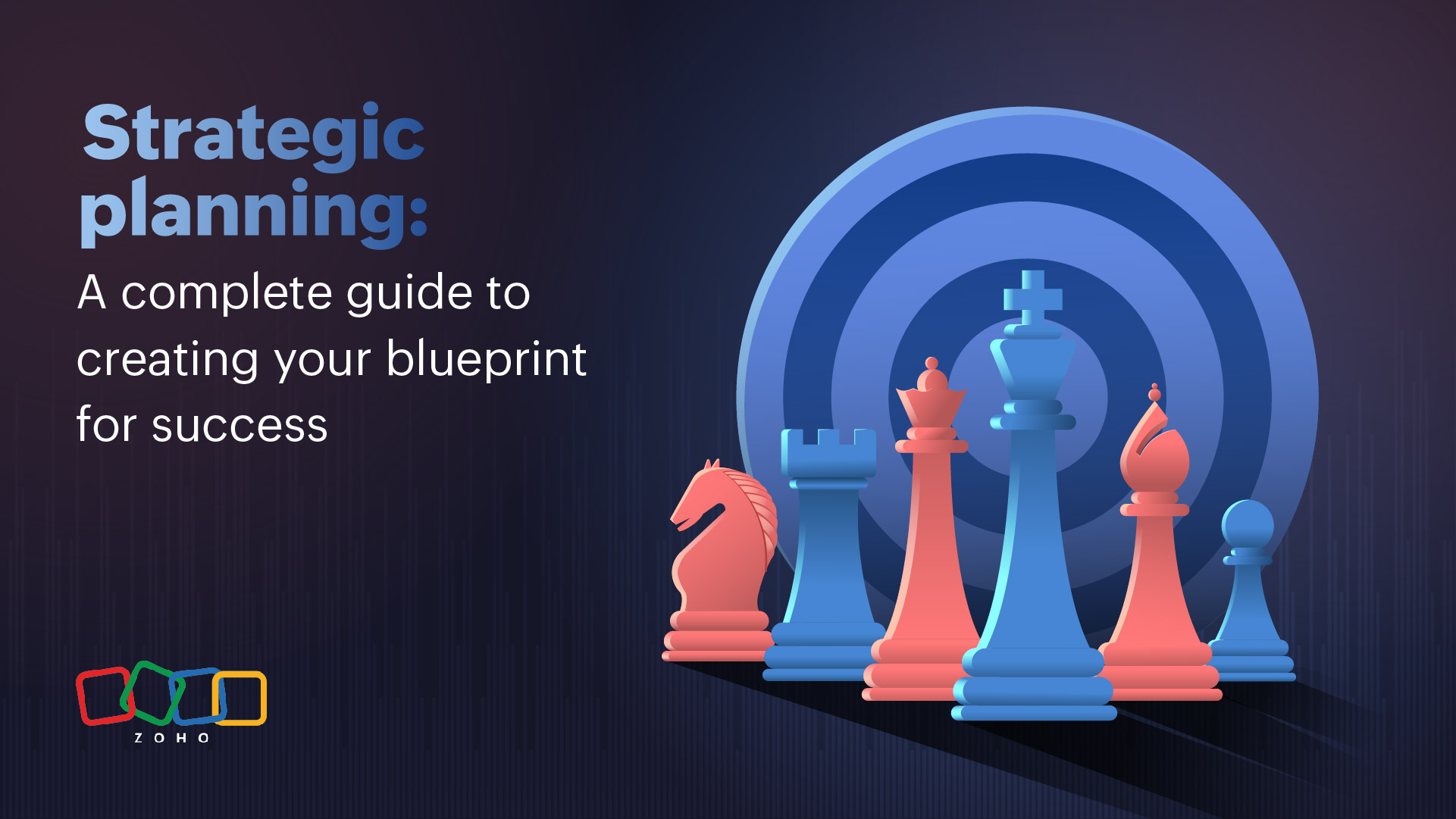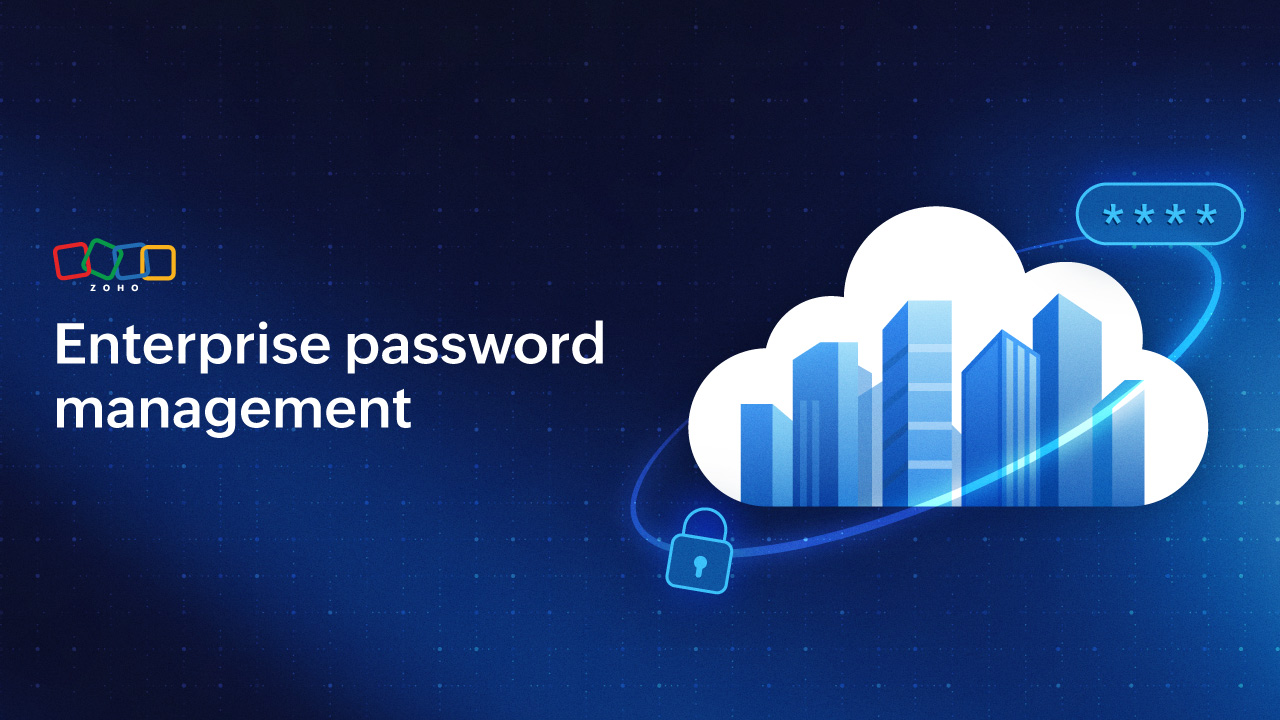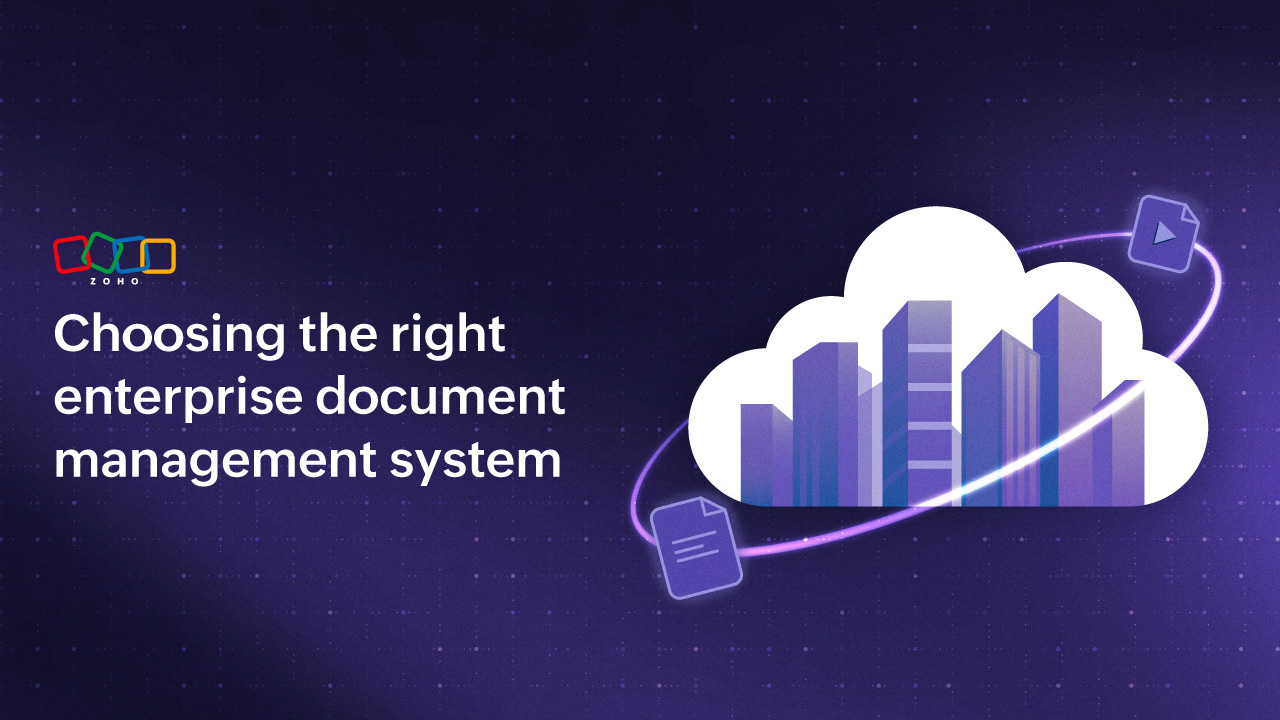- HOME
- All Topics
- Collaboration and Digital Workplace
- Strategic planning: A complete guide to creating your blueprint for success
Strategic planning: A complete guide to creating your blueprint for success
- Published : October 22, 2024
- Last Updated : December 13, 2024
- 606 Views
- 9 Min Read
Sure, you can cook without a recipe or build a house without a blueprint. But when you have a very specific idea of the result you’re trying to achieve, it’s always better to have a plan that details how you’ll get from point A to point Z.
That’s where strategic planning comes in. It’s a business process you and your fellow leaders can use to determine where you want your company to go—and exactly how you’ll get there.

What is strategic planning?
Strategic planning is the formal process of identifying and setting your organization’s objectives and charting a course of action to make that vision a reality.
To put it another way, the strategic planning process includes two equally important but distinct pieces:
- Goal-setting: Define your organization’s long-term goals.
- Action planning: Create a plan to achieve those goals.
A strategic plan requires that you cover both. It’s not enough to articulate your company’s goals—you also need to set priorities, identify relevant actions, iron out timelines, and allocate resources to realize those goals.
When should your company do strategic planning?
A strategic plan typically accounts for the next five years of your company (although some more comprehensive strategic plans map out 10 to 15 years). For that reason, most organizations do strategic planning every three to five years.
However, certain circumstances could warrant a new strategic planning session, such as:
Entering a new market
Launching a new product(s)
Experiencing major internal or external shifts (like leadership changes, mergers or acquisitions, or market downturns)
Even if the planning process itself doesn’t happen regularly, it’s important to revisit your plan regularly to:
Check on your goal progress
Assess market conditions
Revisit your resources
Incorporate changes (such as customer feedback, regulatory shifts, or competitor actions)
You should review your current plan at least annually, but more frequent reviews (such as quarterly) can help ensure that your plan is aligned with your market and the current organization.
In terms of timing, many companies opt to host strategic planning sessions at the end of a fiscal year. However, you have the flexibility to handle strategic planning at a time that works best for your company’s leaders.
Who's involved in strategic planning?
The simplest answer is: everybody. Your company’s leaders and board members (if applicable) will be the ones who collaborate to define the vision and plan, but a thorough strategic plan incorporates insights from everywhere, including:
Employees: Provide valuable insights about their experiences, which can help identify the company’s strengths and challenges.
Customers: Highlight needs, preferences, and feedback that can shape the future direction of the product or service.
External stakeholders: Offer perspective on industry trends, market conditions, and other impacts that can influence priorities.
Department managers: Translate strategic goals into actionable plans for their teams and provide input about resources and feasibility.
Because the strategic planning process hinges on successful information-gathering, it’s not a quick process. Expect it to take anywhere from three to six months to collect the insights you need and turn them into an actionable plan.
Why is strategic planning important?
Strategic planning might sound more like a stuffy formality than a must-have business process, but the many benefits of strategic planning illustrate why it’s so important for organizations:
Set a clear direction: Your strategic plan defines your company’s long-term goals and ensures that all of your departments and teams are aligned and working toward those shared objectives.
Make better decisions: Your strategic plan serves as your organization’s North Star and provides a reliable framework for making rational decisions based on long-term goals—rather than acting on assumptions or impulses.
Plan and prioritize resources: Your strategic plan allows you to allocate your resources—this includes your organization’s time, money, and people—to the projects and initiatives that directly impact your strategic plan rather than getting wrapped up in busywork or last-minute fires.
Increases accountability: Your strategic plan clarifies your vision as well as the responsibilities and timelines involved in achieving that vision, which makes it easier to hold teams, leaders, and individual contributors accountable
Put simply, your strategic plan allows your organization to stop being reactive and instead be more focused, aligned, and deliberate as you make decisions and move forward.
5 strategic planning frameworks to lay the foundation
There’s not one “right” way to craft a strategic plan. Some strategic plans span 70 pages, while other experts maintain that a one-page strategic plan is the best way to go.
Regardless of the specifics, this sentiment is always true: A thoughtful and successful strategic plan hinges on careful preparation. Fortunately, there are many strategic planning frameworks to help you think through various aspects of your organization and build your most effective plan.
1. SWOT analysis
Use it to: Identify strengths, weaknesses, opportunities, and threats related to your business.
A SWOT analysis helps you look at your organization's internal capabilities (strengths and weaknesses) as well as external factors (opportunities and threats) to make strategic decisions and form a targeted plan.
2. PESTLE analysis
Use it to: Analyze only the external factors that impact your organization.
PESTLE stands for Political, Economic, Social, Technological, Legal, and Environmental factors, all of which can help you gain a more comprehensive understanding of the external environment that will influence your strategic plan.
3. Balanced scorecard (BSC)
Use it to: Translate your strategy into actionable objectives.
Using this framework, you’ll look at your organization and evaluate your performance through four different lenses: financial, customer or stakeholder, internal process, and organizational capacity.
4. Porter’s Five Forces
Use it to: Understand industry competitiveness and market dynamics.
This framework looks at five forces (competitive rivalry, the threat of new entrants, the bargaining power of both suppliers and buyers, and the threat of substitute products) to understand your company’s competitive landscape and develop strategies that can help you stand out.
5. Objectives and Key Results (OKRs)
Use it to: Set clear, measurable goals and track your progress toward achieving them.
When you set OKRs, you define ambitious objectives as well as clear milestones and success metrics that indicate your organization is on the right track.
That’s not an exhaustive list—there are dozens of other strategic planning frameworks you can rely on. However, the above frameworks look at various aspects of your organization and the market you’re operating in so you can approach the strategic planning process in a way that’s tailored to your organization’s needs and circumstances.
Creating your strategic plan: 8 steps to identify your company’s future
According to recent research, 50% of leadership teams spend no time at all on strategy, and 90% of organizations fail to execute their strategies successfully. There are several potential factors at play, but this is a big one: Strategic planning seems daunting and complex.
The good news is that it doesn’t need to be. Follow these eight steps and take inspiration from these strategic planning examples to pull together a strategic plan that puts your organization on the right course.
1. Define your company’s mission and vision.
Start at a high level by determining what your organization values and where you want to go. While “mission” and “vision” might sound synonymous, they're different concepts:
Mission: Your company’s core purpose and values
Vision: What your company aspires to be or achieve
Defining the mission and vision before you get into the nitty-gritty goals and action items means that everyone on your strategic planning team is aligned with the big picture.
Strategic planning example: Your company’s mission is to provide high-quality, organic products, while your vision is to create an environment where healthy, organic food is accessible to everyone.
2. Conduct a situational analysis.
Now it’s time to take a magnifying glass to the factors that could support or impede your ability to realize your vision and mission.
You can return to the frameworks above and use a SWOT analysis, PESTLE analysis, or Porter’s Five Forces (or you can even use all of them) to get a thorough grasp of your company’s current environment and make decisions accordingly.
Strategic planning example: You conduct a SWOT analysis to identify your strong brand reputation (strength), high employee turnover (weakness), growing e-commerce market (opportunity), and increasing competition from online retailers (threat).
3. Set your goals.
You know the broad strokes of what your organization wants to achieve, but in this step, you’ll get more specific with clear, measurable goals that support your mission and vision.
You can use a combination of the SMART goals framework and OKRs to establish goals that provide clarity, improve understanding, and push your organization in the right direction. Aim to include three goals (no more than five tops) within your strategic plan.
Strategic planning example: You'll increase your product line by introducing five new organic snack options within the next year to capture a larger share of the healthy snack market.
4. Outline your strategies.
You’ve determined where you’re going—but how will you get there? This step focuses on defining the action steps you’ll use to achieve your strategic goals.
Solicit feedback from all areas and pull together your company’s leaders to brainstorm approaches and prioritize the ones that best fit your organization’s current abilities and market conditions.
Strategic planning example: Your organic food company will increase production capacity at your facilities, launch a marketing campaign focused on sustainability, and offer more in-store sampling events to increase buzz and educate customers.
5. Allocate your resources.
Take a look at the action plan you’ve outlined and ask yourself: What resources do you need to make that happen? Define what’s required, including your necessary budget, personnel requirements, equipment needs, and more.
Once you know what resources you need, determine if you already have them (and, if so, how you’ll allocate them) or develop a plan to secure them. Attempting to execute your plan without the right resources in place will only breed frustration and disappointment.
Strategic planning example: Your company will invest budget into new production equipment, hire a marketing specialist to develop promotional campaigns, and set aside a modest budget for in-store sampling events led by your company’s interns.
6. Define what success looks like.
How will you know when you’ve achieved your strategic goals? You don’t want to rely on hunches or anecdotal evidence, and key performance indicators (KPIs) will help you track your performance and make necessary adjustments.
KPIs are quantifiable success indicators that tell you how you’re progressing toward your goal. Incorporating them into your strategic plan will help you ensure that your organization is making meaningful progress on what matters.
Strategic planning example: Your organic food company sets KPIs related to the percentage increase in sales of new snack products, customer feedback scores, and the number of new retail partnerships you secure.
7. Pull it all together
When you’ve worked through all of these steps, you’re ready to pull that information into a formal strategic plan. If you find a blank page intimidating, opt for a strategic planning template to help you get started.
8. Communicate, review, and revise
When you put so much time and effort into your strategic plan, the last thing you want is for it to be relegated to some random folder or forgotten corner of your company’s intranet.
Your strategic plan is simply a plan—it takes action to turn it into a reality. But that action only happens if you:
Communicate your plan to the entire organization: Research shows that even leaders don’t know their company’s strategic priorities (one-third of leaders couldn’t even name one). When your plan is polished up and ready to go, host a session (or several sessions) where you can share the plan with every member of your organization and ask questions.
Provide additional support and training to leaders: Your department managers are the ones who need to bridge the gap between the strategic plan and the daily work of their teams. Host specialized sessions or provide additional resources to help them translate the strategic plan into tangible tasks for their own teams.
Keep your plan somewhere easily accessible: Your strategic plan serves as your company’s roadmap, which means it needs to be kept in a place where it’s easily referenced. Ensure that every single member of your organization knows exactly where to find it so they’re always operating with the most up-to-date information.
Revisit your plan regularly: Remember that while the strategic planning process only happens once every three to five years, you’ll need to check back on your plan regularly (aim for quarterly) to monitor your progress and make necessary updates. When you do, make sure you communicate those changes to the rest of your organization.
Want to be more strategic? You need a plan
Most companies would prefer to make thoughtful, deliberate, and calculated decisions rather than constantly flying by the seat of their pants. But that’s impossible to do if everybody isn’t in agreement on where your organization is headed and how you’ll get there.
That’s why strategic planning is so crucial. It defines your vision for the future and hashes out a detailed action plan for making it a reality. Your strategic planning process gives you a game plan—so you can go beyond guesswork.
 Kat Boogaard
Kat BoogaardKat is a freelance writer focused on the world of work. She writes for both employers and employees, and mainly covers topics related to the workplace such as productivity, entrepreneurship, and business success. Her byline has appeared in The New York Times, Fast Company, Business Insider, Forbes, and more.


